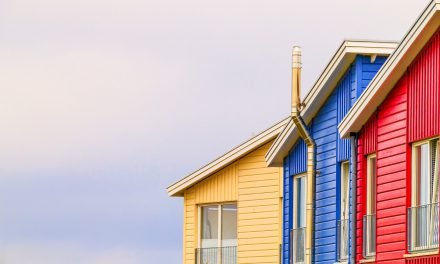The pandemic has provided opportunities to pause, reassess and try new strategies for leaders across various industries. Here in California, builders have seized the moment by converting properties like hotels, office buildings, and factories that were emptied due to stay-at-home orders that eventually turned into prolonged shutdowns, and remote working.
In contrast, multi-family construction experienced a 9% decrease in 2020 from the prior year, though it has bounced back slightly in 2021. Demand for multi-family housing is higher compared to expensive single-family-residence (SFR) construction, but new multi-family construction continues to stagnate due to outdated zoning laws.
Thus, the housing shortage is expected to continue into 2022 as demand continues to outpace supply, especially in California. It isn’t just a lack of inventory that’s the problem, but also a lack of policies and reformed commercial zoning codes which permit builders to construct multi-family housing on commercial land and adapt vacant buildings.
Conversions from commercial to residential in California between 2014 and 2019 were limited, with less than one percent of all commercially zoned parcels being converted to residential use according to a U.C. Berkeley’s Terner Center for Housing Innovation study on commercial to residential conversions.
Between 2014 and 2019, only 38,000 housing units were built on commercially zoned land across California’s four major metro areas with:
- 28,000 units converted in Los Angeles; and
- 9,300 units converted in the San Francisco Bay area.
The shares are much higher for Los Angeles County, showing how the city’s new policies and zoning laws have paved the way for more conversions. The San Diego and Sacramento metros had far less commercial to residential conversions between 2014 and 2019, with only:
- 921 units converted in San Diego; and
- 157 units converted in Sacramento.
Why aren’t builders simply building more new multi-family housing on parcels zoned for residential use, you ask? Well, building new multi-family housing on residential parcels is often limiting and costly.
Builders not only have to worry about site acquisition and environmental restrictions, but also the costs of building an entirely new property from scratch. Whereas, when builders are given more freedom to build on commercial land where they can convert existing buildings, they don’t have to consider these financial setbacks.
This adaptive reuse method keeps the builder within budget and has the potential to increase their return-on-investment (ROI) by lowering the cost-per-unit compared to the cost of site acquisition for new construction.
But even if conditions for commercial to residential conversions improve, the possibility of increasing enough housing through conversions alone is slim. If we want to solve this housing crisis quickly, we will need to incorporate more solutions.
Builders on a budget
Conversions are expected to continue to increase in the next decade, with builders moving away from expensive single-family-residence (SFR) construction towards cheaper multi-family construction, so it’s important that cities work with builders and support this transition so that it works for everyone.
California legislators need to reform commercial zoning codes to allow for more multi-family residential development. Cities can create incentives and programs that help builders and allow for more commercial to residential conversions. For example, Los Angeles invested in a Transit Oriented Communities (TOC) program, implementing new policies which boost density and increase low- and moderate- income units.
Besides reforming commercial zoning, legislators need to work with builders to devise new ways to increase the amount of housing units allowed in commercial areas throughout the entire state. At the same time, they need to work with local land use rules and city designs.
Builders need to work with the city to make sure the property they are adapting meets current residential health and safety standards since hazards are not always apparent until the project begins. Bringing the building up to code may require significant structural upgrades that builders need to watch out for before investing. For example, California state housing law deems a building to be a substandard building if it endangers the public or the occupants:
- life;
- limb;
- health;
- property;
- safety; or
- welfare. [Calif. Health & Safety Code §17920.3]
How quickly we can remedy this housing crisis depends on how effectively legislators work with builders and cities to make sure there is enough multi-family housing to go around. Real estate professionals can make a difference simply by getting involved. Agents can attend local city council meetings or contact their local representatives to advocate for more housing. Representatives will move to make change when enough voters pressure them to reform.
To get into contact with your local representatives, please visit the United States House of Representatives website.














